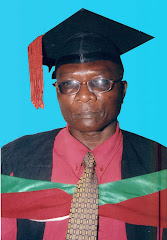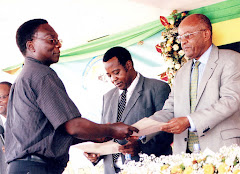CLOSED Circuit Television (CCTV) cameras are modern Information and Communication Technologies (ICTs) devices designed to monitor moving objects e.g people and vehicles when installed in buildings or along the streets for security purposes.
They are useful as they keep pictures of the recorded images and later can be retrieved for memories. Research works has been made for the innovative developing concepts in today’s era of science and technology which has enabled the CCTV Camera devices to reveal the truth of a hidden incident.
There is no doubt that, CCTV cameras provides adequate security and protection of the properties kept in a room or in a house. Incase of any loss that might occur, the tool can be used for research to reveal the truth of the matter and the people involved.
CCTV cameras are essentially electronic security devices that use television technology capable of monitoring movements of people or vehicles and other mobile objects within and around a building complex.
The system deploys digital cameras and recording systems and is malleable enough to suit the specifications of any organizations. Its operations are interpolated to a network system and monitored from a remote location hence making it an ultimate and effective solution for the security needs of a wide radius.
Due to unpredictable criminal intentions and maneuvers, security measures at times demand application of multiple security systems, hence the need to adopt a concentric ring of security measures is important to discourage or deter intruders into a secured premise.
Banks and other financial institutions such as the Bureau de Change shops, supermarkets etc, have reasons to ensure that the IT systems on CCTV are properly integrated in their business premises.
Sometimes you might hear from people asking how far can a CCTV camera be able to see. This is the question every one would like to have an answer. The truth is, to every CCTV camera, it is only the lens which will determine how powerful a camera can be.
According to the Managing Director of the SSTL Group, the designers and suppliers of the equipment in the country, Mr. John Kusaga, the systems are able to monitor from one point to 254 points depending on the number of cameras installed per site.
According to him, the system can have a local monitoring centre as a main monitoring and controlling centre for the installed cameras at a site. Likewise, you can have a remote monitoring centre far from the controlling centre.
For instance, he says that, with remote monitoring centre, an operator at Head offices in Dar es Salaam can monitor, control and record images captured by CCTV cameras installed at Bukoba to one of their offices.
Describing their technical ability he says that, there are different applications of CCTV systems. These are not made to be installed in buildings only, these can also be installed in public areas such as in vehicles parking areas, Bus terminals, Airports and along the streets. In developed countries, they install CCTV cameras in buses and in passenger trains.
It can be remembered that, in the morning of the February 3rd 2006, a daring gang of armed robbers raided the National Bank of Commerce (NBC) branch at Ubungo in the city of Dar es Salaam and successfully managed to run away with a substantial amount of money.
The heist that took about few minutes is close to the city’s busy main bus terminal along the Morogoro Highway. According to witnesses there were about 10 bandits under the command of a woman who was welding a sub-machine gun and clad in long robes.
People mostly petty traders outside the busy bus terminal fled in every direction to seek for refuge, while others took to their heels in a far distant scene without knowing what was going on when a bullet was fired threatening them not to come close.
One bandit blocked traffic on one side of the main highway to effectively control the area from any possible attacks from either direction. On accomplishing their mission, the bandits escaped from the scene by using three Saloon cars.
Sales and Advertising Manager of a city based publishing company Mr. Marukam Zakharia, who was hijacked together with other few clients at the banking hall and ordered to lie down, described the incident as inhumane.
Mr. Zakharia (49) who had encountered with such a thing for the first time in his life remembered how clients and staff inside the bank including himself were ordered to lie face down while the bandits ransacked the bank taking away money and cellular phones from them.
Describing the whole episode, Mr. Zakharia said that the incident traumatized his brain. He had encountered with such a phenomenon that morning unexpectedly when he went there as a bank customer.
He suffered minor injuries on his left arm and sustained little bruises in some other parts of his body as they hurriedly struggled to get a space on the floor when ordered to lie down by bandits. On the course of this mishaps, without his knowledge he knocked himself on a hard object that he couldn’t remember.
It’s very absurd to see that, no arrests had ever been made in connection with the robbery up to now. But if the CCTV surveillance cameras would have been installed at the bank and its surroundings the arrest of the culprits could be much easier
Security advisors says that, it had become a difficult task to trace on the whereabouts of the suspected robbers as the incident occurred at such unlikely time when nobody ever dreamt of such an occurrence.
A rising wave of armed banditry targeting banks and large companies, including Bureau de Change shops hit the country three years ago leading to public outcry over heightened insecurity. Dar es Salaam city has been the leading with the high spiraling wave.
The armed robbery incidents which had been common resulted into loss of lives and huge sums of money. In the city of Dar es Salaam residents accused the police force of not doing enough to get rid of the situation.























